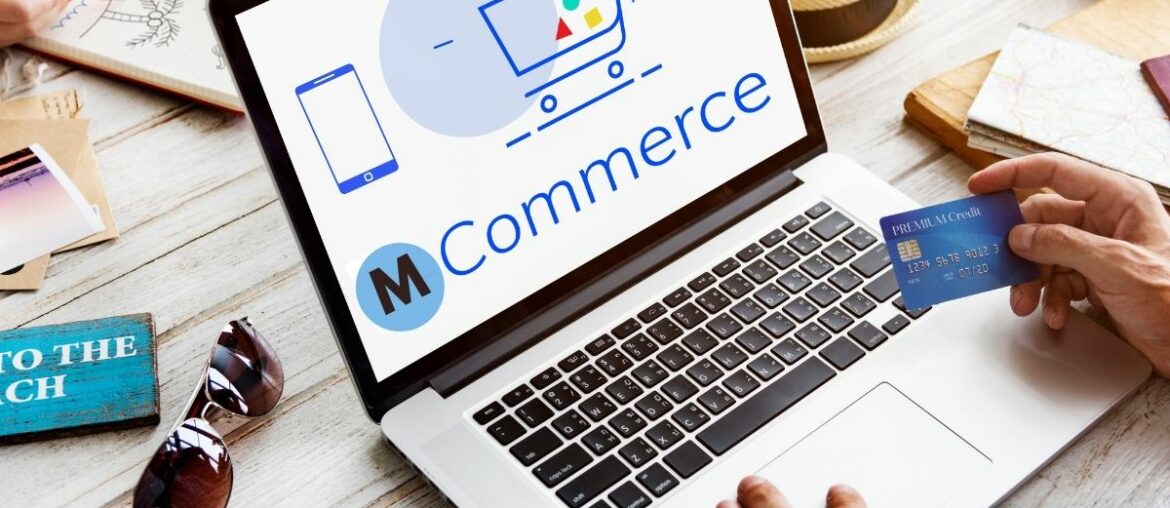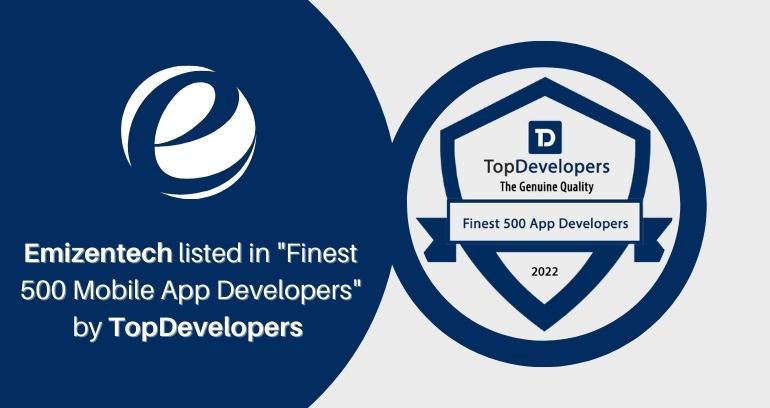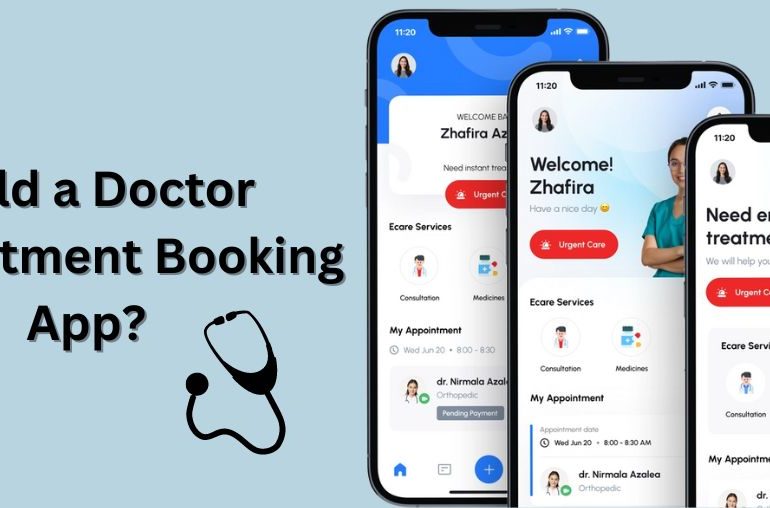Last Updated on May 4, 2022
If you are one of the 6.37 billion people across the world who use a mobile device or a smartphone, then you must have realized its role in your everyday life.
Whether millennials or Gen Zers, all have a smartphone in their pocket, which they frequently use every couple of minutes. The morning starts with checking the messages on smartphones and then booking cabs, making appointments, buying groceries, watching TV shows, browsing social media, and much more. In short, mobile devices are being used even for the simplest tasks such as paying bills, checking the weather, and driving instructions. Online business owners have also realized the potential of mobile devices, and that’s why mobile has also become a medium for shopping, and that’s where m-commerce (Mobile Commerce) steps in. This article will go through many different aspects of mobile commerce, its types, its benefits, and much more.

What Is mCommerce?
M-commerce is not a technical term but an acronym for mobile commerce. Mobile commerce is a branch of e-commerce that deals with digital transactions made through a smartphone. In simpler words, m-commerce is buying and selling items, services, or goods through wireless movable devices like mobiles, smartphones, or tablets. Thus, m-commerce allows users to access online shopping platforms without a desktop and do shopping even on the go. But mobile commerce has led to the foundation of many different industries and helped existing ones grow, such as:
- Mobile money transfers
- Online tickets booking and boarding passes
- Digital content purchasing (OTT platforms, online music app, etc.)
- Mobile banking
- In-app payments
- Location-based services
- Mobile marketing, coupons, and loyalty cards
Types of M-Commerce
You can categorize m-commerce by function in 3 different types: mobile shopping, mobile banking, or mobile payments. In mobile shopping, a user can buy a product or service from an ecommerce app or site like Amazon, Flipkart, etc.
Mobile banking includes any handheld technology that enables customers to conduct transactions, and it is mostly done by an app authorized by a banking institution. Mobile wallets have digital payments apps such as Paytm, PhonePe, Google Pay, etc., by which users can make payments in physical stores or online stores without using a card or physical cash.
What Is The Difference Between eCommerce & mCommerce?
Although m-commerce seems exactly like ecommerce, there are differences as well. eCommerce is a general term for any electronic commerce activity on the internet. These activities focus on trading products or services with related components, including information, transaction, payment, logistic, etc. M-commerce is a subset of ecommerce in which all these activities are carried out on a mobile device.
Advantages Of Mobile Commerce
Just a few years ago, only large companies such as Amazon, Walmart, eBay, etc. were seemed to serve their audience on mobile devices by creating mobile apps and switching to mobile-friendly platforms. But with the evolution of technology, the cost of mobile app development drops, and now every second ecommerce company is reaping m-commerce benefits.
Thus, regardless of the size of your business, keep reading this article to know the benefits of m-commerce and how it can take your business to the next level.
Improve Customer Experience
eCommerce advent has already revolutionized the way we shop. Through ecommerce, the customers can shop from their desktops/laptops; instead of walking into the physical stores, they can compare a wide range of products, their pricing, and shop from the comfort of their homes.
However, with m-commerce, the customers can do all these things, but without even sitting in front of a desktop, they just need their smartphone. Also, m-commerce gives you many capabilities which aren’t possible with traditional e-commerce. These are:
- Mobility: Although ecommerce is possible through portable laptops, buyers still can’t take laptops everywhere. But people don’t leave their houses without a smartphone. Thus m-commerce is more convenient.
- Reachability: Through m-commerce, you can send push notifications, SMS, etc. This makes you reach a broader range of customers even on the go.
- Location-tracking: Pinpoint of user locations through GPS technology and Wi-Fi can help you provide location-specific and personalized.
Maximum Growth
Although there is already a huge chunk of users of mobile commerce, it hasn’t attained saturation and is continuously growing.
In 2022, m-commerce sales were expected to account for 6% of all US retail sales. But by 2025, Statista forecasts that m-commerce sales will make up over 10% of all US retail sales, which would be a growth of 7 percentage points since 2018.
Omnichannel
Omnichannel means selling on multiple channels, including physical stores, social media channels, marketplaces such as Amazon, eBay, etc., to create a seamless experience and cohesive brand message across all touchpoints.
An omnichannel experience is essential as it meets your customers where they are and makes it easier to buy.
Thus, mobile devices are the best way to achieve omnichannel commerce as most m-commerce customers have mobile in their hands.
Multiple Payment Options
For a simplified and easy buying process, the emerging mobile payment solutions have opened the door for various payment options like Paypal, Stripe, Amazon Pay, Apple Pay, etc.
Many stores now offer a one-click checkout feature by which customers can enter their payment details only once and just click to purchase that.
Disadvantages of Mobile Commerce
Compared to the advantages, the demerits of mobile commerce are pretty insignificant and can be overcome with the right strategy. Still, it is worth knowing about them.
Constant Need for Optimization
Although m-commerce is staying on the top, we can’t forget that desktops are the root of e-commerce and still matter. In fact, there are many advantages of desktop over mobile.
As per the report of Retail TouchPoints, the conversion rate through Desktop devices is 3.9% which is more than double the 1.8% average rate of smartphones.
The reason can be screen size instead of mobility as the tablets (larger screen size) have a conversion rate of 3.8%, while other devices with smaller screen sizes had a rate of only 0.1%. The value of the orders from the desktop devices is also far higher than the mobile devices. Statista found that, in 2019, smartphones accounted for 64% of global retail website visits, but it accounted for just 46% of e-commerce revenue, which was the same as desktop devices.
All these factors come to a single point: mobile commerce needs regular optimization. Since customer behavior can change anytime, it is imperative to look out for the latest technologies and improvisations in UX to ensure that your online store is mobile-friendly and fast, convenient, and easy to navigate.
Too many payment methods
Although payment methods abundance is an advantage, unfortunately, not all payment platforms and mobile wallets are present in all regions. Also, customers of a particular region prefer a certain payment method over others. That’s why it has become complex for online retailers to manage their business globally.
You may think that offering more payment options would simplify the mobile experience, but sometimes less is better. Too many payment choices sometimes lead to no payment in the end.
Thus, you should first gather data about your audience’s preferred payment methods and then provide the right mix of payment options for your area of business.
Customers can easily compare prices
One of the major drawbacks of simplifying the mobile experience is that customers can easily compare prices in different stores. In just a few clicks, customers can find out which store is selling the product at the least price, and you may lose your sale if your competitor is selling at a lower price.
So, how can you overcome this roadblock? By offering same as like your competitors. Check the prices offered by your competitors and show your customers how your product is value for money in a better way than competitors’.
Security
This is a significant concern in m-commerce. As per a Forrester study, 30% of smartphone users agree to the point that they don’t make online purchases from mobile devices as they don’t feel secure using mobile payment services. Many customers are also afraid of their data being sold to 3rd parties. That’s why if customers are given permission to access their data through mobile devices, it is the responsibility of the e-commerce business to protect their data and steward it well.
Some Examples of M-commerce Implementation
Amazon

There would be hardly any millennial who hasn’t heard of the Amazon mobile app. Amazon introduced its mobile app in 2011 and is currently available in almost every country. There are more than 2.5 million sellers active on Amazon. 23% of online customers go first on Amazon for inspiration when they don’t have a specific product in mind for purchase.
eBay

eBay is probably the oldest name you have heard in the e-commerce industry. It is amongst the most popular e-commerce platforms. It has 182 million eBay users globally. Nearly one-third of the US mobile users use eBay. There are 1.3 billion listings on eBay. $22 billion worth of goods were bought and sold on eBay’s marketplace platforms in Q4 2019.
Walmart

Walmart is also a huge name in the e-commerce industry. There are 1.3 billion listings on eBay, and $22 billion worth of goods were bought and sold on eBay’s marketplace platforms in Q4 2019.
Wrapping Up
In this article, we have gone through many different aspects of m-commerce. M-commerce is a developing trend. The customers will only adopt the technical era, and soon the groceries will be ordered only through mobile apps. Hence, you should leverage this technology before the saturation of this market. At Emizentech, the best mobile application development company, we have expertise in developing mobile e-commerce apps. Let us know your requirements.





 USA
USA UK
UK Singapore
Singapore